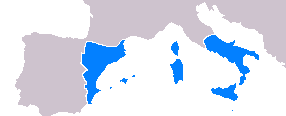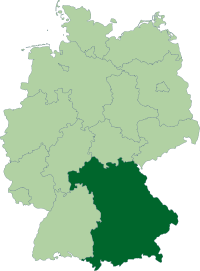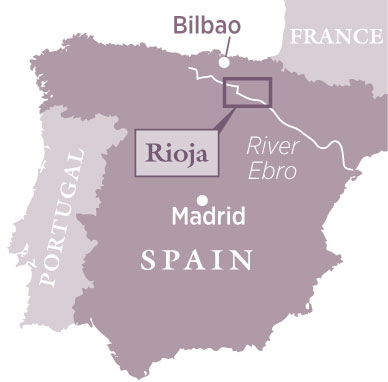 New Year's Eve is fast approaching, and I'm sure that more than a few of you will be opening a bottle of champagne to ring in the new year. Champagne will get a full blog post in the future, but for now, the issue at hand is getting the bubbly out of the bottle and into your glass.
New Year's Eve is fast approaching, and I'm sure that more than a few of you will be opening a bottle of champagne to ring in the new year. Champagne will get a full blog post in the future, but for now, the issue at hand is getting the bubbly out of the bottle and into your glass.Wednesday, December 31, 2014
Happy New Year!
 New Year's Eve is fast approaching, and I'm sure that more than a few of you will be opening a bottle of champagne to ring in the new year. Champagne will get a full blog post in the future, but for now, the issue at hand is getting the bubbly out of the bottle and into your glass.
New Year's Eve is fast approaching, and I'm sure that more than a few of you will be opening a bottle of champagne to ring in the new year. Champagne will get a full blog post in the future, but for now, the issue at hand is getting the bubbly out of the bottle and into your glass.Monday, November 24, 2014
Beaujolais for Turkey Day
Its coming up on Thanksgiving here in sunny Seattle, and every place that sells wine is trying to sell you the perfect wine to pair with your Thanksgiving turkey.
There are many fantastic choices and popular favorites, and it seems to me that the wine that seems to cause the most confusion is Beaujolais (BOH-zho-lay).
Beaujolais? Beaujolais Nouveau? Aren't they the same? Kinda? Sorta?
Well, no, not really.
Thursday, November 20, 2014
Manchego: A Spanish Classic
The story of Don Quixote takes place in La Mancha, a hot, arid plain in south central Spain. The novel mentions cheese 13 times, and the cheese on Don Quixote's mind was Manchego (Mon-CHAY-goh), one of Spain's iconic cheeses.
Wednesday, November 12, 2014
Brown Ale for Thanksgiving
 I'm back
to blogging after taking some time off to prepare
for the Craft Beer Institute's Cicerone certification exam - just in time to talk about beer to serve with
Thanksgiving dinner.
I'm back
to blogging after taking some time off to prepare
for the Craft Beer Institute's Cicerone certification exam - just in time to talk about beer to serve with
Thanksgiving dinner.I know what you're thinking: Thanksgiving is a special celebration so you should pull out the wine, right?
Don't think that you have to, because there is historical precedent for serving beer instead. Do you think that the Pilgrims ran down to the corner store for a bottle of Beaujolais Nouveau? No, they did not. They drank the beer that they had brewed.
Honor the Pilgrims by serving beer!
Honor the Pilgrims by serving beer!
There are plenty of great beer choices
for Thanksgiving dinner, but I'm going to suggest something
that isn't terribly sexy, esoteric, or beer-geeky: Brown Ale.
Monday, September 22, 2014
Grenache is for Autumn
Happy First Day of Fall!
As the seasons change, what we eat
changes, and so the wine we drink will change too. Grenache is a perfect autumn
wine – its a nice transition from lighter wines drunk on the patio
during the summer to fuller bodied wines best enjoyed sitting by a
fireplace during winter.
 Grenache (Greh-nosh) is thought to have
originated in northern Spain, and from there transplanted to southern
France and the islands of Corsica and Sardinia. There is also a
school of thought that Grenache is indigenous to the islands and was
brought to Spain after the Spaniards invaded in the 13th
Century.
Grenache (Greh-nosh) is thought to have
originated in northern Spain, and from there transplanted to southern
France and the islands of Corsica and Sardinia. There is also a
school of thought that Grenache is indigenous to the islands and was
brought to Spain after the Spaniards invaded in the 13th
Century.In more recent history, Grenache has been transplanted in Australia, California, and Washington.
Friday, September 12, 2014
Emmental, the original Swiss cheese
While Swiss cheese has become a generic
term, there are actually several
different tasty types of Switzerland-made cheese that deserve your
attention.
Emmental (EM-mawn-tall) is one of the world's classic cheeses. It's the Swiss cheese
that all other Swiss cheeses are patterned after.
Friday, September 5, 2014
Oktoberfest!
Munich, Germany's Oktoberfest is the world's most famous and imitated beer festival, and it's name has become synonymous with the style of beer served there: Märzen (Mayrt-zen).
Before refrigeration, it was difficult to brew beer during Bavaria's hot summer and the quality of the beer suffered. In 1553, Bavarian law decreed that beer could only be brewed between September 29th and April 23rd. Beer was brewed in March (Märzen in German) to be stored in cellars and caves for drinking during the summer.
Sunday, August 31, 2014
Rich, Ripe, Juicy Zinfandel
 Zinfandel has been a cornerstone of
California winemaking since the 1850s when it was planted by
immigrants who came looking for gold. Since it's time for your Labor
Day barbecue, it's a good time to take a look at this quintessential
California wine.
Zinfandel has been a cornerstone of
California winemaking since the 1850s when it was planted by
immigrants who came looking for gold. Since it's time for your Labor
Day barbecue, it's a good time to take a look at this quintessential
California wine.
Zinfandel makes a deep purple wine with big, bold flavors of blackberry jam,
raspberry, strawberry and plum with spices like black pepper and
cinnamon.
Its a classic wine to pair with barbecue!
Monday, August 25, 2014
Carmina Burrata
Burrata (Boor-RAH-tah) is a silky, creamy, fresh cheese originating from the Puglia area of Italy.
Burrata was originally made from water buffalo milk, but today it is usually made from pasteurized cow's milk.
The soft, elastic exterior is white and glossy, and the pure white interior is creamy and soft. It has a buttery texture and a fresh, milky flavor.
Burrata is Italian for buttery, which is a perfect description of the texture of this cheese's interior.
If you are a fan of creamy cheese, then you are going to love burrata!
Tuesday, August 19, 2014
Be a Weizen-heimer!
 |
| Map of Germany by David Liuzzo |
Weizen is German for wheat, and refers to the Bavarian (Southern Germany) style of Weissbier.
Hefe is German for yeast, and refers to the
beer being unfiltered and cloudy.
Hefeweizen (which we now know means yeast wheat) is
by far the most popular form of wheat beer.
Thursday, July 24, 2014
The riddle of Rioja
 Rioja is Spain's most recognizeable
wine region, and the Tempranillo grape plays a major component in the wines
that come from Rioja.
Rioja is Spain's most recognizeable
wine region, and the Tempranillo grape plays a major component in the wines
that come from Rioja. Tempranillo (Tem-Pra-KNEE-yo) is Spain's most common red grape, where it goes by a number of names depending on where it's planted and where the wine is made. To keep things simple, this post will focus on the Rioja region of Spain, where the grape is called Tempranillo.
Tuesday, June 3, 2014
Humboldt Fog: an Iconic American Original
 America's most original, recognizable artisan cheese was first made by a woman who was raising goats to provide milk for her children.
America's most original, recognizable artisan cheese was first made by a woman who was raising goats to provide milk for her children.
Humboldt Fog is Cypress Grove Chevre's signature cheese, named for the dense local ocean fog that rolls into Arcata, California from the
Humboldt Bay.
This iconic artisan cheese is made from pasteurized goat's milk and is aged about a month. It's won a whole slew of awards in major cheese competitions.
This iconic artisan cheese is made from pasteurized goat's milk and is aged about a month. It's won a whole slew of awards in major cheese competitions.
Wednesday, May 7, 2014
Sauvignon Blanc: a variety of styles!
Sauvignon Blanc (SAW veen yon BLAHNK) is a white grape that, more than almost any other grape variety, directly reflects it's growing climate in the wine it produces.
Sauvignon Blanc is a high acid wine, mouthwatering
and an excellent companion to food, and a very aromatic wine. It's flavor varies wildly, depending on the climate where
the grapes were grown.
When picking out a Sauvingnon Blanc, it pays to match the flavor qualities you desire to a particular wine region to look for.
Tuesday, April 22, 2014
Bock Basics
Bock is German for male goat, a prancing symbol of spring fertility, and Bock beer is a malty German beer style, usually dark, which is brewed in the winter to be drunk in the spring.
It is now springtime. I think you know what to do.
Tuesday, April 15, 2014
Chèvre has got my goat
Spring is here! The peach tree in my
front yard is blossoming and fiddleheads and nettles are sprouting.
I can't help thinking about the fresh goat's milk cheeses that will soon be ready and I'm obsessed with being out on my deck, sitting in the sunshine and enjoying a nice goat cheese snack.
Cows have been domesticated to the
point that they will provide milk all through the year, but small
scale goat milk production is still fairly tied to the seasons.
Thursday, April 3, 2014
Why won't you dance with me? I'm not no Lemberger!
Lemberger is a Austrian
grape with an off-putting name that is not widely grown in the United States.
You have to try it!
Friday, March 28, 2014
Ale turns pale.
Pale ale is the hallmark of the craft beer movement.
It's a beer complex enough to be interesting, but light bodied enough to be easily drinkable. It's also very quick to brew, which is why every new brewery that comes along makes a pale ale. New breweries need to get a product on the market quickly to generate some cash flow, and lagers need time to mature.
What are the unique qualities of American and English Pale ales?
Friday, March 21, 2014
A toast to Brie & Camembert!
What would be a good drink to wash down soft cow's milk cheeses like Brie and Camembert?
Monday, March 17, 2014
Merlot lotta love
Merlot (mer loh) is often dismissed as a second rate Cabernet Sauvignon, but not only is Merlot delicious on its own, it is often used as a blending grape to make some fantastic wines.
Merlot is the most commonly grown grape in France and it helped put the Washington State wine industry on the map.
If you've dismissed Merlot in the past, do yourself a favor and give it a second chance.
Monday, March 10, 2014
Hey Bud, I'd like a pilsner.
Your average beer drinker probably thinks of lager & pilsner as interchangeable terms, both meaning a light colored, light bodied beer, but lagers come in a variety of strengths and colors, from light and bitter pilsners to dark and roasty schwarzbiers.
There are several styles of lager, but the most interesting one is Pilsner.
Monday, March 3, 2014
I used to work as a cheesemonger, but I Camembert it any longer.
 Camembert (KAM-ehm-behr) is a cow's milk cheese originally made in Normany, which is northwest of Paris. Oddly, Camembert cheese is not made in the village of Camembert.
Camembert (KAM-ehm-behr) is a cow's milk cheese originally made in Normany, which is northwest of Paris. Oddly, Camembert cheese is not made in the village of Camembert.The name Camembert de Normandie is protected by the French goventment, and it refers to a bloomy rind cheese made from raw Normandy cow's milk and produced in the Normandy region of France.
However, like the name Brie, the name Camembert is not protected, and is sometimes used to refer to many similar styles of cheese that may or may not be related to Camembert de Normandie.
How is Camembert different than Brie?
Friday, February 7, 2014
How about a nice Chianti?
 Chianti is not a type of grape, but rather the region that this particular wine comes from, and the Chianti region of Italy is in Tuscany.
Chianti is not a type of grape, but rather the region that this particular wine comes from, and the Chianti region of Italy is in Tuscany.The primary grape used to make Chianti wine is called Sangiovese (san-jo-veh-zeh), and that's where Chianti's magical food pairing ability comes from.
Sangiovese is a thin skinned grape that ripens slowly. It produces a wine with as much acidity as Syrah, but with a lighter body. Sangiovese has a medium body similar to Tempranillo.
Sangiovese is Italy's most commonly planted red grape varietal, but for wine made with Sangiovese to be called Chianti, the wine must come from a specific region in Italy. Outside of the Chianti region, wine made from the Sangiovese grape goes by a variety of names, depending on where it is made, such as: Brunello, Vino Nobile di Montepulciano, Morellino, or just Sangiovese, which is what it goes by in Washington State.
Grab a bottle, any bottle, of Sangiovese, and pour yourself a glass.
Thursday, January 30, 2014
Just like people, there are only two kinds of beer...
There's no shortage of unusual beer names and obscure beer styles, but knowing some of the major style differences
can help you to pick an unfamiliar beer from a list while having a
pretty good idea of how its going to taste, and by trying something
new, you might find a beer that you really, really like.
So where can the casual beer drinker begin? Here are some basics.
So where can the casual beer drinker begin? Here are some basics.
Wednesday, January 22, 2014
It's not Ewe, it's Brie.
 Brie (BREE) is a soft cow's milk cheese, originally made in an area once called Brie. This area is now part of the Paris urban sprawl, and is now called Seine-et-Marne.
Brie (BREE) is a soft cow's milk cheese, originally made in an area once called Brie. This area is now part of the Paris urban sprawl, and is now called Seine-et-Marne. There are two types of Brie, Brie de Melun (BREE deuh meh-LOON) and Brie de Meaux (BREE deuh MOH) whose names are protected by the French government, but the word Brie, however, is not protected.
In common use, the word Brie is often mistakenly used as a generic term for any soft, bloomy rind cheese, and Brie often gets confused with Camembert (KAM-uhm-behr).
Subscribe to:
Posts (Atom)



